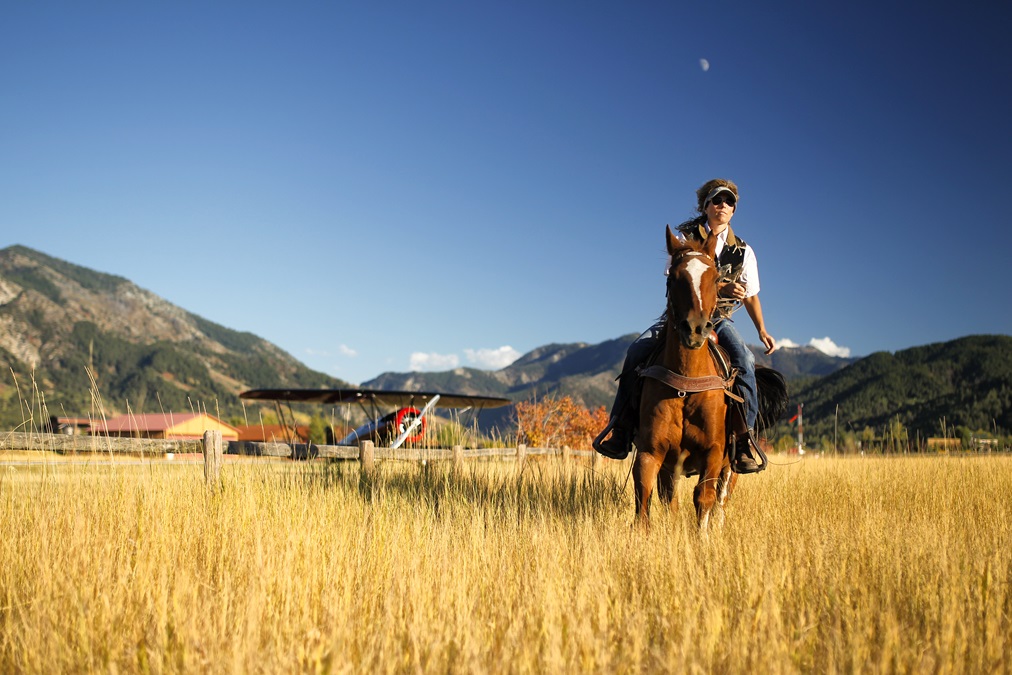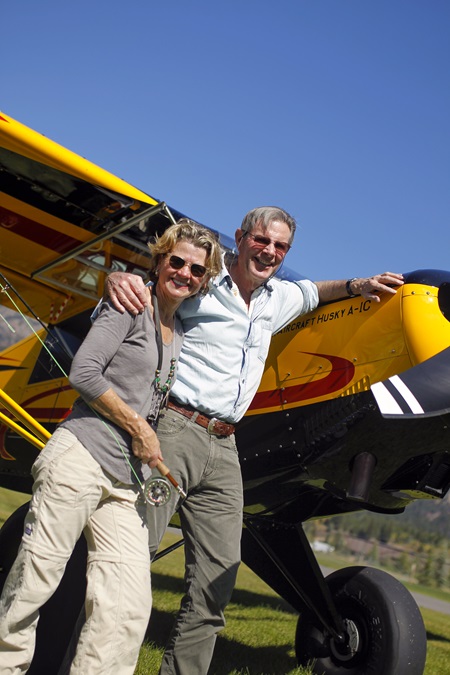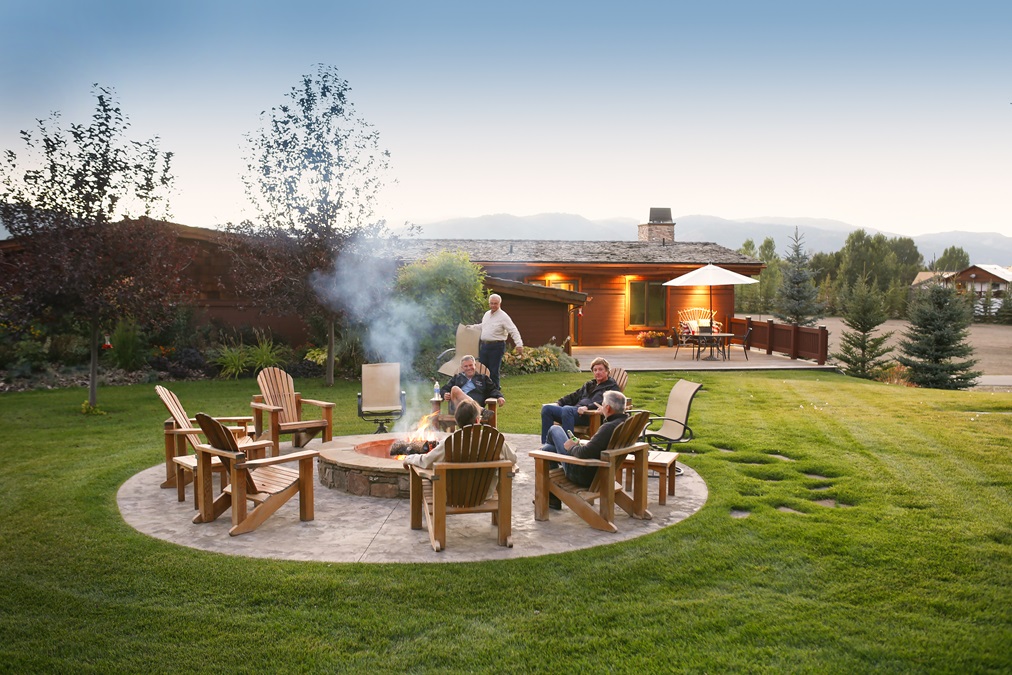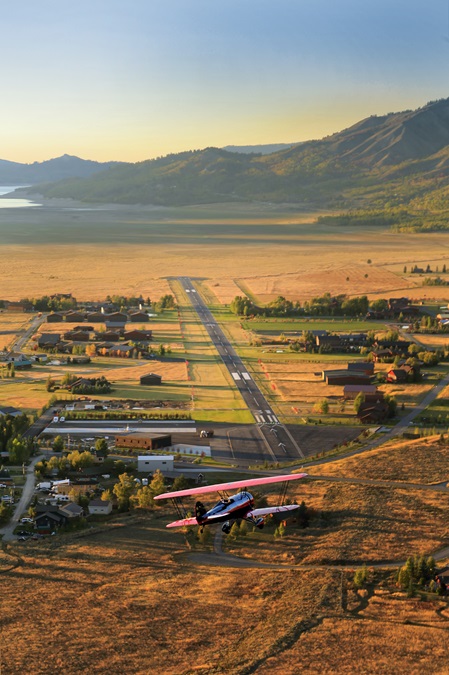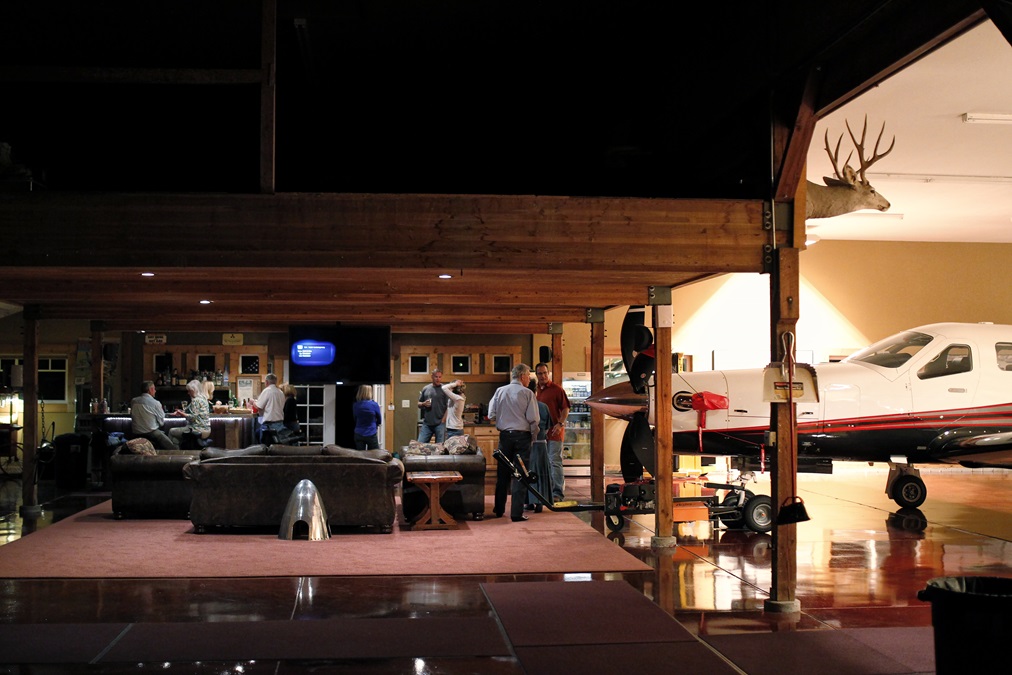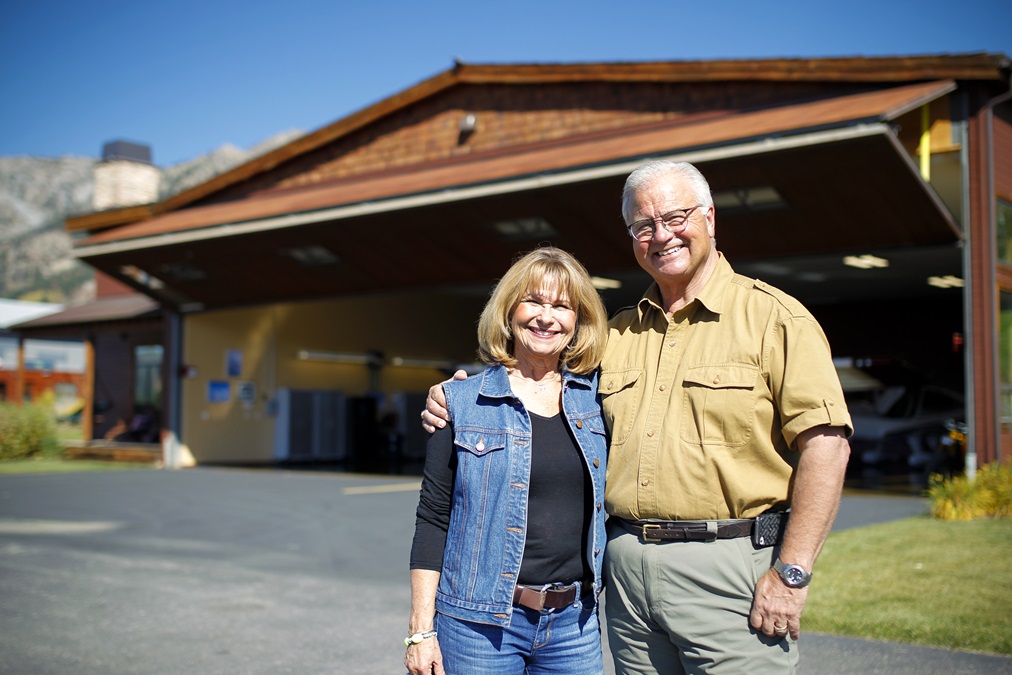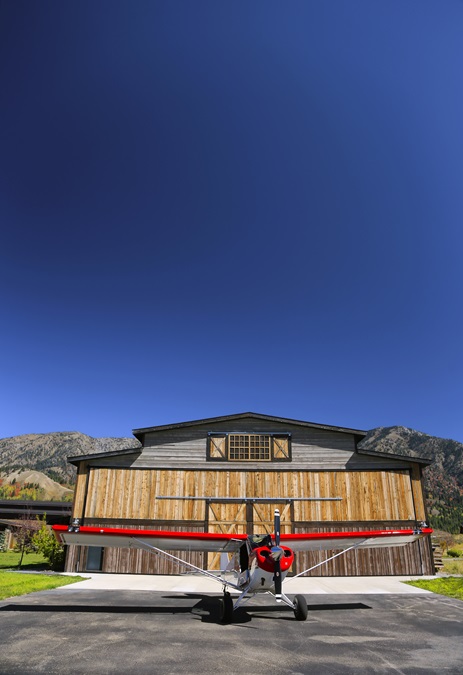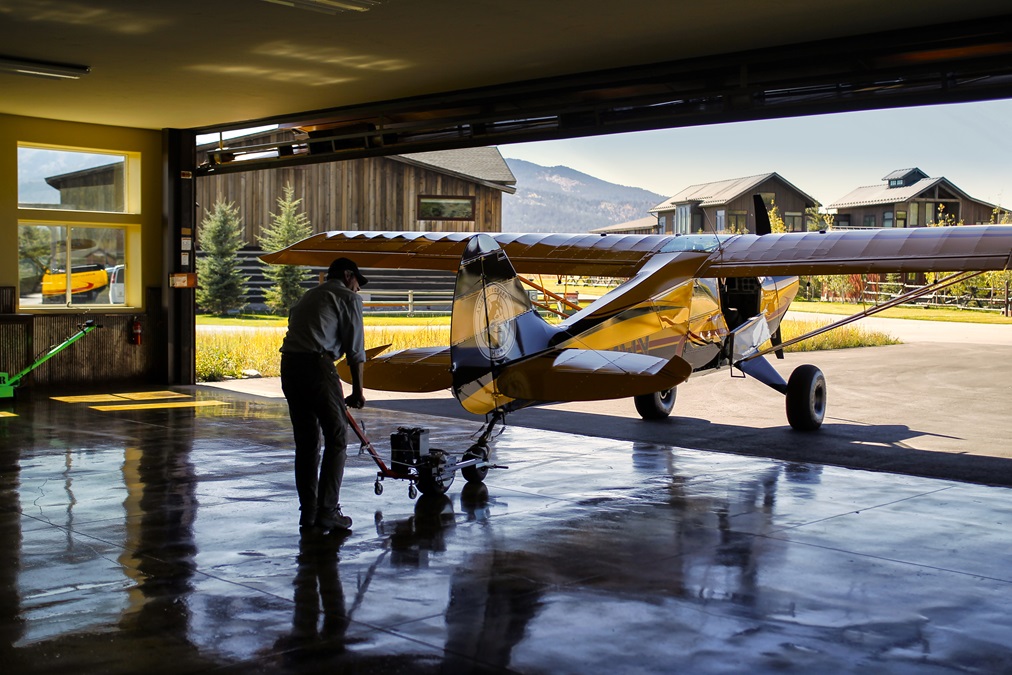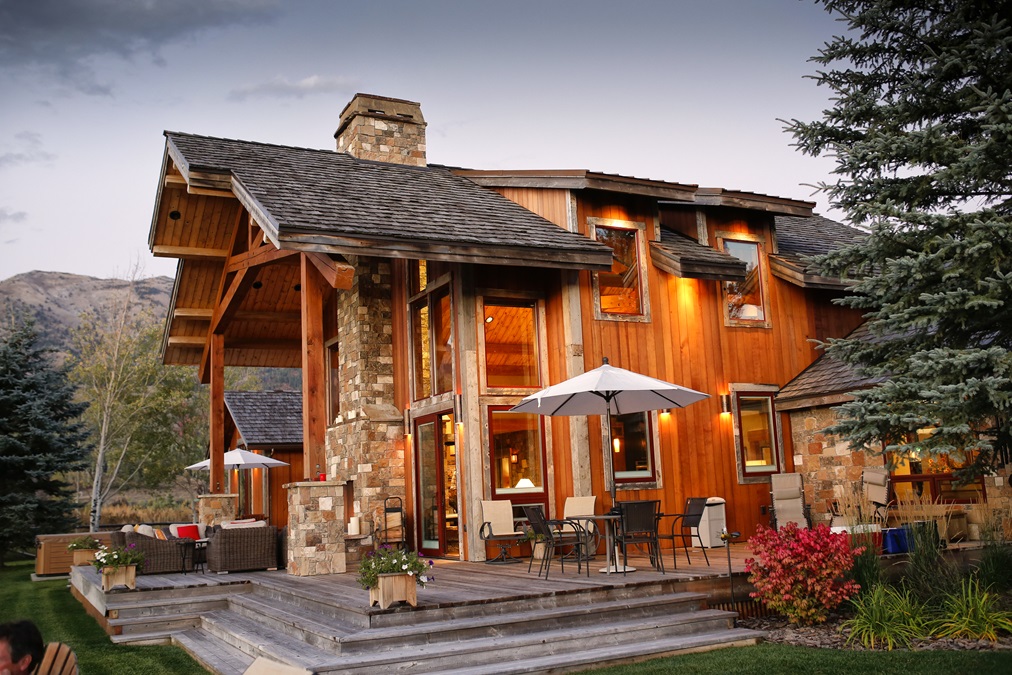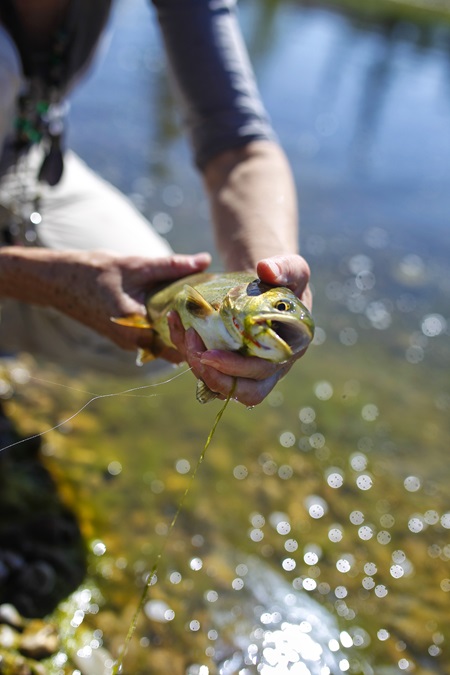Living a Western Life
The uncommon beauty of Wyoming’s Alpine Airpark
The frequent fly-outs are just one of the everyday events that help weave the social fabric of Alpine Airpark. And it is a tight weave.
“Everybody gets together,” says Cook. “There’s fire in the hole, fire in the bowl, or an impromptu potluck dinner at someone’s hangar at least weekly.” Fire pits and fire bowls seem almost mandatory among the airport’s 70-some homes and hangars. Huskys, built just down the valley in Afton, Wyoming, seem almost universal. And the official runabout for the airport seems to be the Polaris Ranger.
There are many themes at the picturesque airpark, tucked into the Star Valley, where the Greys and Salt rivers feed into the Snake River to form the Palisades Reservoir on the Idaho border. “People who move here love the West and the outdoors and the mountains,” says Cook. “They’ve all achieved something in life. They’ve got nothing to prove. They’re good neighbors.”
Homeowner Dave Hermel concurs. While the astounding recreational activities in the region caused him to consider a home at Alpine, it was the people who made him want to stay. “We met the neighbors and they were just good people,” he explains.
Hermel and his wife, Darcy, bought a log cabin at Alpine in 2010 after first considering it in 2008. “With the economic meltdown, we sat back and waited to see what would happen. Clearly the airpark was solid financially.” Their two-bedroom home once was a guest home to a larger property on the other side of the taxiway. Developer Bill Weimann moved it to the runway side and converted a barn next door into a hangar. The Hermels updated the cabin and added sleeping facilities to the hangar—and a bar and entertainment system. Plus, of course, a fire pit, making it a regular hangout for their sons and other community residents.
The Hermels are from Minnesota, where they own a wholesale distribution business and vending food service company. Dave is the third-generation owner; their sons will take over soon. They use their Daher TBM 900 and Piper Malibu to make trips as frequently as they can from Minnesota to Alpine. “I have to pinch myself. I can’t believe I’m here,” he says. They make regular outings up and down the valley and throughout the region, exploring the mountains in their Carbon Cub, Husky, or AirCam. Pop over the ridge just north of the airport and you’re staring at the Grand Tetons, quite a different view from flat Minnesota. “We all took mountain flying courses once we moved here, and now feel comfortable flying into backcountry strips,” Hermel says.
In extolling the community, Hermel comes across like a chamber of commerce cheerleader. “Hunting, fishing, hiking, world-class skiing, the Palisades—17 miles long—even a rugby field. This is the greatest recreational area in the world. We’re the gateway to the West,” he proclaims.
If appreciation for the outdoors is a theme among residents, so is an appreciation for the tax structure in Wyoming. There’s no income or estate tax in the state, especially attractive to Hermel because the Minnesota estate tax can climb as high as 16 percent.
Resident Stan Dardis says the tax structure didn’t enter into his decision to move to Alpine, “but it doesn’t hurt.” He and his wife, Sharon, lived in the Twin Cities of Minnesota but retired to Alpine in 2010. “It’s a lifestyle, a good community. Good people. Wholesome,” he says.
Although retired, almost daily he lays out challenges for himself. “By 8 a.m. I roll out the Husky and tell myself I won’t come back until I find a moose, an elk, and a deer. It might be 30 minutes or it might be an hour and a half,” he says. “Other days, I will declare that I will not fly over 80 mph.”
Sharon also chimes in about the lifestyle. “Friends call and by 10 a.m. we’re headed to kayak the Snake River. We’ll stop on a sandbar for lunch. Home by 3 p.m. Then we might make a late-day flight or meet around the fire hole for an informal dinner. We call it terminal fun.”
Noting the years ticking by, Stan takes full advantage of the lifestyle. “There’s a bit of a sense of urgency to live every day wide open because these things, they do pass.”
He also sees it as his responsibility to help carry on the vision that developer Bill Weimann had for the narrow dirt runway he first encountered in Alpine. Weimann is credited with turning the privately owned airpark into one of the finest fly-in communities in the country. The dirt strip is now a paved 5,800-foot runway with a recently installed AWOS. The community used its well-financed development fund to privately commission a GPS approach to the field, which the FAA will soon approve. Weimann two years ago turned the airport over to the residents, and Stan Dardis is the head of the homeowners association. Runway lights and widening of the runway are in the future, he says. The privately owned airpark receives no FAA or state funds, according to Dardis.
While Dardis is justifiably proud of the freshly paved and striped runway, his neighbor Jack Schulte prefers the shorter parallel grass runway for his Husky and Cessna 182. Like Dardis, Schulte retired from the city—Chicago, in this case—to Alpine, leaving behind his career as a futures trader. Like many residents, Schulte and his wife, Marion, spend only part of the year at Alpine. The winters can be long and cold, which attracts those who like winter sports.
However, the Schultes and others prefer warmer climes part of the year. They spend about seven months a year at Alpine and five months in Marion’s native New Zealand, living an endless summer. The Schultes live in one of the original six houses on the runway, there when Weimann discovered the place. Schulte loves the outdoors and especially the rural nature of the region. Wyoming has only a half-million residents. “There’s still a cowboy mentality here. People mind their own business,” he says.
Keeping that small community feeling is the task of the various developers selling property at Alpine. Marion Schulte is a real estate agent on the field. As a resident she quickly sizes up those who show an interest in the airpark. “Most people are just wonderful, but sometimes I can tell that a person just won’t fit in here. If high-end shopping is more important to them than fishing, for example, I quickly point out the benefits of living in Jackson,” she says with a sly smile.
The airport has about 53 homes and 71 hangars. It will accommodate at most 125 homes under the current plans, helping calm any concerns about the place being overrun.
Developer Steve Funk bought 64 acres on the north side of the runway that was originally meant to accommodate 180 homes. Instead he carved it up into 25 two-acre lots for hangar homes, a development he calls The Refuge. If prospective residents can’t afford to build both the home and the hangar at once, they must first build the hangar. Nearby, a group of standalone hangars accommodate those who live nearby but want access to the runway. The airpark also includes a few condo-style hangars with residences overhead. “There’s a wide variety of price points available,” says Schulte.
Hermel is confident the unique venue can maintain its beauty and charm even while maturing. He describes the developers at Alpine as “very responsible.” One of the things he enjoys most about the community is the feeling of responsibility shared by all to enjoy the outdoors while respecting it.
“There are no attitudes in Alpine,” he explains.
Email [email protected]

